3D Digital Innovation: Transitioning From Physical to Digital
AN INDUSTRY INSIGHT BY FASHNERD FOUNDER MUCHANETA KAPFUNDE.
As business practices in various sectors adjust to accommodate digital innovation, the textile industry has also started to shift direction. Driven by the growing need to rethink the industry’s approach to design, development and manufacturing, the textile business has finally started to turn to digital technology to help solve some of its industry-specific difficulties and complexities.
Under pressure to innovate, I am excited to witness 3D digitalisation finally taking centre stage in the textile industry. Propelled forward by the brand-new digital wave, textile businesses are setting new standards to future-proof the sector. Rethinking how they operate, more and more textile businesses are becoming less afraid to explore the benefits of transitioning from physical to digital. The majority are doing this by examining the advantages of merging textiles with digital experimentation. So, what exactly is 3D digital technology offering an industry notorious for being resistant to change?
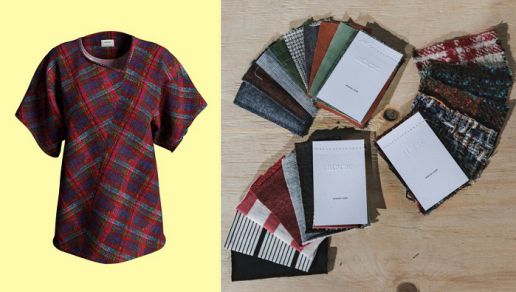
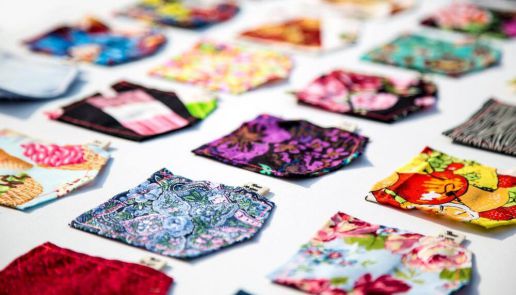
The Digitisation of Fabrics, A Powerful Asset?
Modern technologies are proving to be an influential asset when it comes to playing an integral part in changing the dynamics of the textile industry. With the potential to give textile businesses a competitive edge, we are starting to see 3D digital innovations being highlighted at textile trade shows, which, in my opinion, is a step in the right direction.
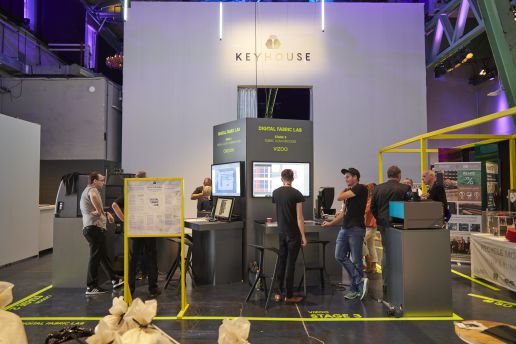
This is an opinion formed while frequenting various textile trade shows. As a regular visitor I am familiar with physical swatches. Now imagine if I, as a visitor (or customer), could access the digital twin of a piece of fabric along with its physical swatches. This concept was introduced at Munich Fabric Start (MFS) trade show during their 2019 edition of KEYHOUSE.
The Munich based trade show showcased fabric suppliers offering a digital twin alongside physical swatches. Partnering up with Digital Fabric Lab, they demonstrated the individual steps of fabric digitisation and how textile businesses can create a realistic image of digital fabric samples. The key takeaway was that physical no longer needs to be the master copy. More recently, in 2021, MFS invited attendees to indulge in 3D digital fabrics and trend inspirations showcased at their DIGITAL TREND SPACE.
PHYSICAL NO LONGER NEEDS TO BE THE MASTER COPY
Another digital platform making it possible to digitise fabric is Esmetex. “We aim to simplify the fabric development process; no more looking through swatch boxes and shipping swatches back and forth“, said the founder of Esmetex, Victor Chao, to Apparelresources.com. Adding:
“It is not practical for a designer to search through 18,000 fabric swatches when Frontier® can search based on whatever criteria the user is interested in and return all relevant fabric information on one page. This can be done on a desktop, laptop, tablet or smartphone by accessing our website or by installing our app.”
Chao is not alone in trying to help the textile industry move with the times. Emily Croneberger, manager marketing and industry programs, Cotton Inc, said in an interview:
“Digitising the fabrics is our first step in keeping cotton in a digital landscape”. She continued: “We have committed to creating an online digital library of our fabrics, free for download and use by brands, mills and accounts. We plan to move forward in promoting and expanding our digital assets.”
Although it is unlikely that physical samples will become a thing of the past anytime soon, the digital twin of fabric offers some advantages, like storing all fabric data in one central place. It is also worth taking note that solutions offered by digital material platforms like Swatchbook, also make it easier to verify the physical textiles’ authentication. For those attending shows, this type of tech solution makes viewing the fabrics more effortless while helping textile businesses be less wasteful when it comes to physical material samples and swatches.
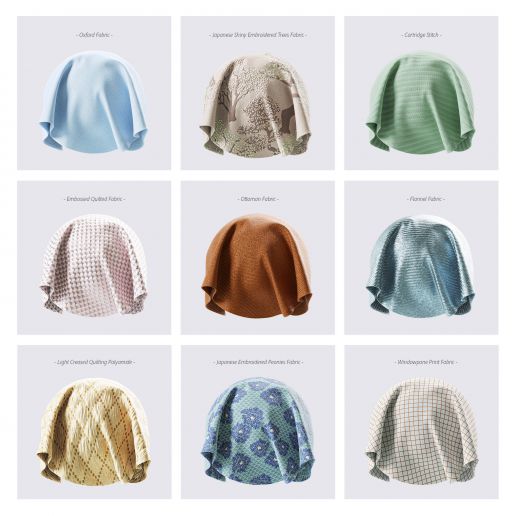
The Wonder Of Digitally Transformed Fabric
As industries transform to meet global changes, we have seen a rise in the adoption of newly emerging technologies. It is these genius ideas that have allowed the textile industry to take material digitisation to the next level. By hybridising the physical world with the digital one, textile companies that once relied on physical meetings at trade shows are now turning to innovative textile technologies to help them digitally transform their fabric during the global pandemic. One of these solutions is Scanatic™ Nuno Fabric Scanner provided by tg3ds.
Digitally powering the textile industry, the tg3ds studio uses an intelligent imagery processing engine to capture 3D texture display properties of fabrics in the smallest digital footprints. Another solution provider is Twinbru. They have made a name for themselves by setting an industry standard when it comes to making it possible for digital fabrics to be used in all virtual settings, like AR, VR and even game design.
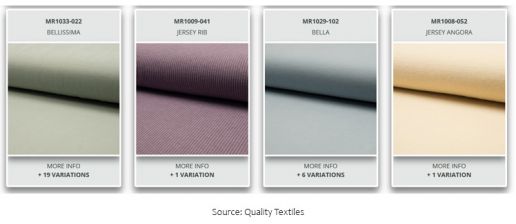

Ready for Limitless Possibilities?
When the world of “all things digital” merges with one of the oldest industries, you know it’s time to stand up and take notice. If you are a fabric mill, a garment manufacturer, or a textile brand, now is the time to leave outdated methods behind and transition your product from physical to digital. For example with help from companies like CLO Virtual Fashion, who can accurately emulate drape-sensitive fabrics such as lightweight wovens and jerseys with various material properties, more on this here. Yes, there are still imperfect kinks to the technology, like not being able to mimic complex behaviour of materials, but that does not make innovations like 3D Digital plan B; it should always be ‘the plan’.
So why embrace digital transformation? If you want to become faster, more relevant and more cost-efficient, now is the time to capitalise on all the possibilities that digitalisation offers. Yes, some might argue that the technology is not industry-ready enough to replace physical samples with virtual ones, but we can all agree that a new textiles economy is arising, and it makes sense to be a part of it.
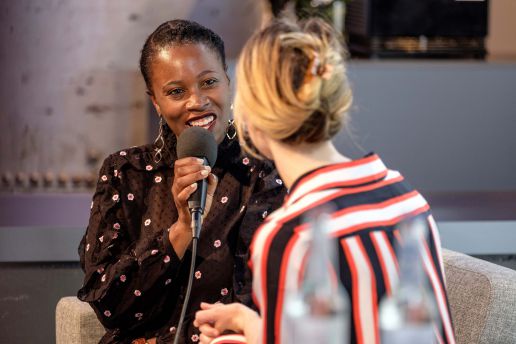
ABOUT THE AUTHOR
Founding editor-in-chief of FashNerd.com, Muchaneta has worked in the fashion industry for over 14 years. She is currently one of the leading influencers speaking and writing about the merger of fashion with technology and wearable technology.
Muchaneta Kapfunde | editor@fashnerd.com

